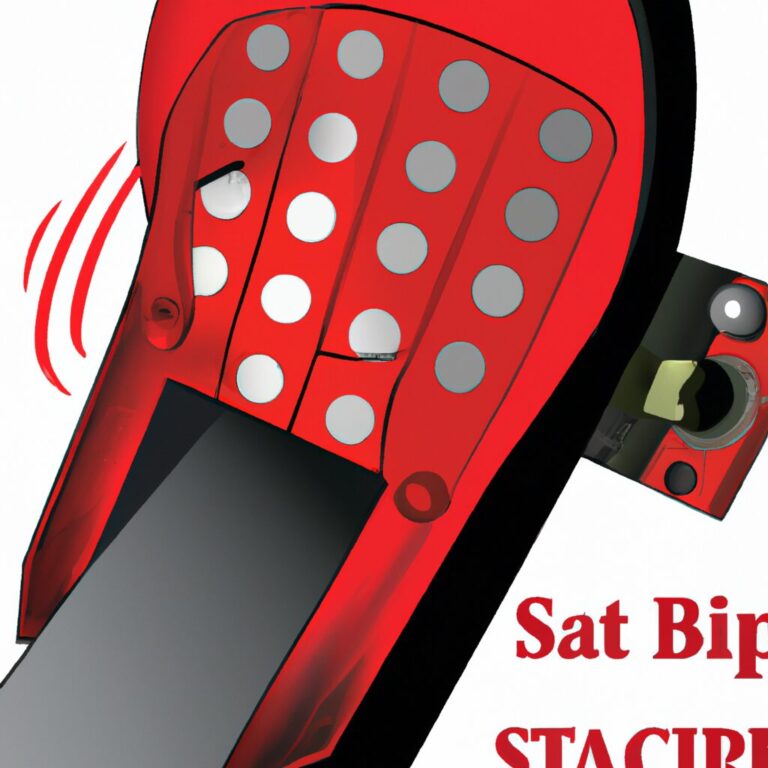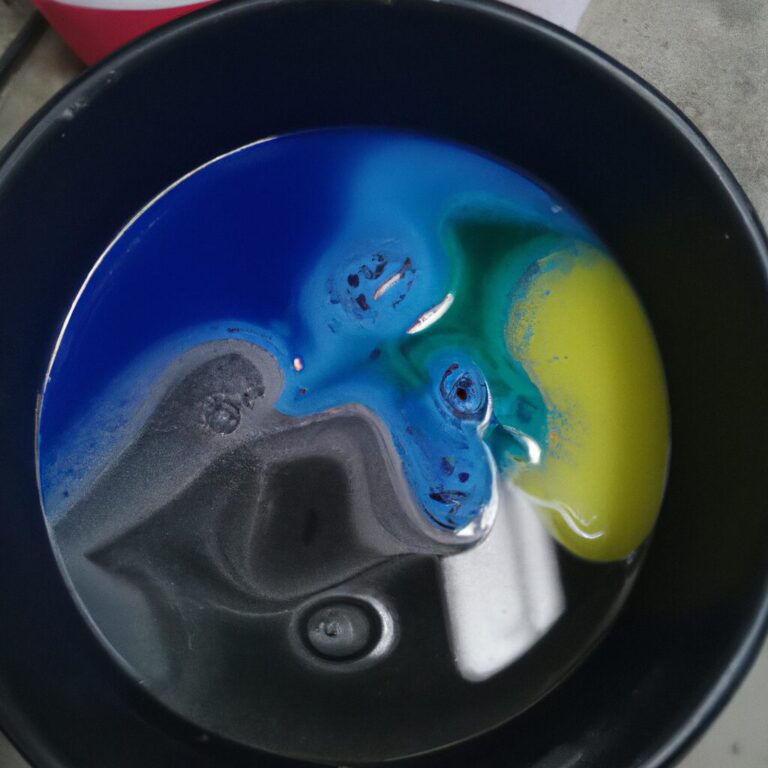How Many Times Can You Jump a Car Battery
When it comes to jump-starting a car battery, think of it like a well-used bridge – sturdy but not invincible. But how many times can you push that limit? Is there a breaking point?
Understanding the nuances of jump-starting frequency and its impact on your vehicle's battery health is crucial. Let's explore the delicate balance between convenience and potential harm when it comes to reviving your car's power source.
Key Takeaways
- Repeated jump-starts harm battery and vehicle electronics.
- Quality cables are crucial for successful jump-starts.
- Skill in jump-starting prevents damage and promotes safety.
- Excessive jump-starting strains alternator, risking costly repairs.
Factors Affecting Jump-Starting Frequency
Frequent jump-starting of a car battery can lead to detrimental consequences due to the strain it places on both the battery and the vehicle's electrical system. When a battery repeatedly requires jump-starting, it indicates an underlying issue such as a weak or failing battery. Jump-starting a car with a dead battery multiple times a week can be harmful and may point towards the necessity of battery replacement.
Excessive jump-starting can also harm the alternator. The alternator isn't designed for frequent recharging of a deeply discharged battery, and this can lead to damage over time. Each jump-start increases the risk of damaging vehicle electronics, particularly with repeated attempts. Car batteries aren't intended for deep-cycling, so frequent jump-starting can significantly reduce their lifespan.
Moreover, the alternator may burn out if it's frequently tasked with recharging a deeply discharged battery, highlighting the importance of limiting jump-starts to preserve both the battery and the vehicle's electrical system.
Battery Health and Jump-Starting
Jump-starting a car battery once is generally safe, but it's crucial to consider the overall battery health when engaging in jump-starting activities. When jump-starting a vehicle, keep the following battery health and jump-starting considerations in mind:
- Check Battery Health: Before jump-starting, assess the condition of the battery. If the battery is old or damaged, frequent jumps may indicate underlying issues that need to be addressed promptly.
- Avoid Excessive Cranking: When jump-starting, avoid prolonged or excessive cranking as it can harm the battery and other vehicle components, reducing their lifespan.
- Cold Weather Impact: Cold weather can increase the risk of battery discharge, making regular jump-starts more common during winter months. Ensure your battery is well maintained to combat this issue.
- Use a Portable Jump Starter: Keeping a portable jump starter in your vehicle is a convenient solution for emergency jump-start situations, especially in remote areas where assistance may not be readily available.
Impact of Jumper Cable Quality
When assessing the impact of jumper cable quality on jump-starting a vehicle, it's crucial to prioritize durability and effectiveness to ensure safe and efficient battery recharges. High-quality jumper cables with thicker gauge wire can handle more jump-starts than lower quality cables. Quality jumper cables are designed with better insulation to prevent overheating and potential damage during use.
Cheap, low-quality jumper cables may not transfer power effectively, limiting the number of successful jump-starts. Investing in durable, well-made jumper cables can ensure reliable performance and longevity for multiple jump-starts. Using poor quality jumper cables can lead to safety hazards and potential damage to the vehicle's electrical system.
Therefore, always opt for quality jumper cables to guarantee the efficient transfer of power during jump-starts and to minimize the risks associated with using substandard cables. Prioritizing the quality of your jumper cables is essential for a safe and successful jump-starting process.
Importance of Skill in Jump-Starting
When jump-starting a car, your skill level directly impacts the safety of the battery connection.
Understanding proper procedures and techniques ensures the correct handling of electrical components.
Skillful execution minimizes the risk of damage and promotes efficient battery performance.
Skill in Jump-Starting
Mastering the technique of jump-starting a car battery is imperative to safeguard both the battery and the vehicle's electronic systems from potential harm. When jump-starting, ensure you follow these crucial steps:
- Correct Connection Sequence: Connect the jumper cables in the right order to prevent electrical surges.
- Safety Precautions: Prioritize safety by wearing protective gear and keeping a safe distance from the battery.
- Avoiding Dangerous Situations: Incorrect procedures can lead to gas discharge or explosions, so be cautious.
- Preventing Further Battery Damage: Understanding the process and timing can help avoid additional harm to the battery.
Safe Battery Connection
To ensure a safe battery connection during jump-starting, it's essential to understand the correct sequence and polarity for connecting jumper cables effectively. Proper handling of jumper cables is crucial to prevent sparks and potential damage to the vehicle's electrical system.
Incorrect connections can lead to harm to the battery, alternator, and other vehicle components. Skillful management of jumper cables reduces the likelihood of accidents and ensures a successful jump-start without causing harm to the batteries.
Knowing the correct polarity and terminal connections is vital for a safe and efficient jump-starting process. Developing proficiency in jump-starting skills not only helps avoid costly repairs but also guarantees the safety of both the vehicles and individuals involved.
Risks of Jump-Starting Too Frequently
Jump-starting your car too frequently can overload the electrical system, potentially damaging the battery's lifespan.
Excessive jump-starts strain the alternator, which may not fully charge the battery while the vehicle is running.
The risk of harming vehicle electronics due to reversed polarity also increases with each jump.
Overloading Electrical System
Overloading the vehicle's electrical system through frequent jump-starts poses a significant risk of damaging essential electronics and straining critical components such as the alternator. This strain can lead to premature failure of key parts and result in costly repairs. To avoid these issues, it's crucial to limit the number of times you jump-start a dead car battery. Here are some reasons why overloading the electrical system with multiple jump-starts can be detrimental:
- Damage to Vehicle Electronics: Excessive jumps can harm sensitive electronic components.
- Strain on Alternator: Frequent jump-starts can overload the alternator, causing it to wear out faster.
- Increased Risk of Electrical Malfunctions: Multiple jump-starts raise the likelihood of electrical system failures.
- Potential for Costly Repairs: Overloading the system may result in expensive repairs to fix the damage incurred.
Damaging Battery Lifespan
Have repeated jump-starts jeopardized your car battery's lifespan? Jump-starting a battery too frequently can lead to damaging its lifespan, resulting in premature battery failure. This practice can also harm the alternator, impacting its ability to properly recharge the battery. Moreover, frequent jump-starts increase the risk of reversing polarity, potentially causing harm to the vehicle's electronics. Car batteries are not designed for deep-cycling, so the habit of frequent jump-starts can significantly shorten their lifespan. Additionally, if the alternator is regularly used to recharge a deeply discharged battery due to constant jump-starts, it can lead to the alternator burning out, risking the vehicle's electrical system.
| Risk | Consequence |
|---|---|
| Damaging battery lifespan | Premature battery failure |
| Alternator damage | Decreased ability to recharge battery |
| Reversing polarity | Potential harm to vehicle electronics |
Safest Practices for Battery Charging
To ensure the safe charging of a dead car battery, it's recommended to use a portable jump starter or another vehicle with a functional battery. When charging a dead battery, follow these best practices for optimal safety and effectiveness:
- Allow Full Charge: It's advisable to let the dead battery charge fully to prevent strain on the vehicle's components during jump-starting.
- Use Good Battery Connection: Connecting the dead battery to a vehicle with a good battery is a secure method to ensure safety and efficiency.
- Utilize Free Services: Take advantage of free battery charging services offered at local auto parts stores for convenient assistance.
- Avoid Strain: Be cautious not to put unnecessary strain on the vehicle's system during jump-starting to avoid potential damage.
Signs of Battery Replacement Need
Experiencing frequent instances of needing to jump-start your car battery could be a clear indication that it might require replacement soon. Signs such as slow engine cranking, dim lights, and the need for repeated jump starts are all indicative of a failing car battery.
Typically, a car battery over three years old or one showing signs of weakness should be considered for replacement to avoid being left stranded with a dead battery. Additionally, if you detect a rotten eggs smell or notice corroded terminals when inspecting your car battery, these are further signs that a replacement is needed.
To prevent sudden breakdowns, it's crucial to make a habit of regularly checking the health of your car battery and addressing any issues promptly. By being proactive in monitoring the condition of your car battery and recognizing these signs of replacement need, you can avoid the inconvenience of a dead battery catching you off guard.
Tips for Battery Health Maintenance
Maintain optimal battery health by promptly addressing any underlying issues causing quick drainage, such as parasitic draws. To ensure your battery stays healthy, consider the following tips:
- Monitor Charging Frequency: If you find yourself charging the battery multiple times a week, it may be time to consider a replacement to maintain optimal battery health.
- Address Parasitic Draws: Quickly address any underlying issues, such as parasitic draws, that can cause the battery to drain fast and shorten its lifespan.
- Regular Driving: Regularly driving your car helps keep the battery charged and prevents the need for frequent jump-starts, contributing to a longer battery life.
- Check Aftermarket Accessories: Replace any aftermarket alarms or accessories that cause parasitic draw, as they can unnecessarily drain the battery and impact its health.
Frequently Asked Questions
Is It Bad to Keep Jumping a Dead Battery?
Jumping a dead battery frequently is detrimental to its health. Overcharging can occur, straining the alternator and impacting the electrical system long term. Voltage fluctuations from excessive jumps can damage electronics, decreasing battery lifespan significantly.
Does Jumping a Car Multiple Times Drain Your Battery?
Jumping a car multiple times can indeed drain your battery quicker, affecting its health and longevity. To prevent this, address underlying issues causing the need for frequent jump-starts. Consider alternatives and safety precautions.
Can You Damage a Car by Jump-Starting?
Jump-starting a car can pose risks like overheating, electrical damage, and alternator strain. Implement safety precautions to prevent harm to your vehicle. Repeated jump-starts can lead to system damage, so monitor your battery health.
How Many Times Can You Use a Jump Starter Before Charging?
You can maximize battery lifespan by monitoring jump starter efficiency. Recharge after each use for emergency preparedness. Regular charging maintains reliability. High-quality starters offer up to 20 jumps per charge, extending lifespan.
Conclusion
Congratulations, you've become a jump-starting expert!
Remember, jump-starting a car battery should be a last resort, not a weekly routine. Keep your battery healthy by avoiding excessive cranking and using quality jumper cables.
If you find yourself jump-starting frequently, it may be time to consider a replacement.
Stay safe and maintain your vehicle properly to prevent any unnecessary strain on your system.
Happy jump-starting!



![7 Best Electric Unicycle Reviews of 2021 [With Buying Guide]](https://landroverbar.com/wp-content/uploads/2018/03/best-electric-unicycle.png.webp)